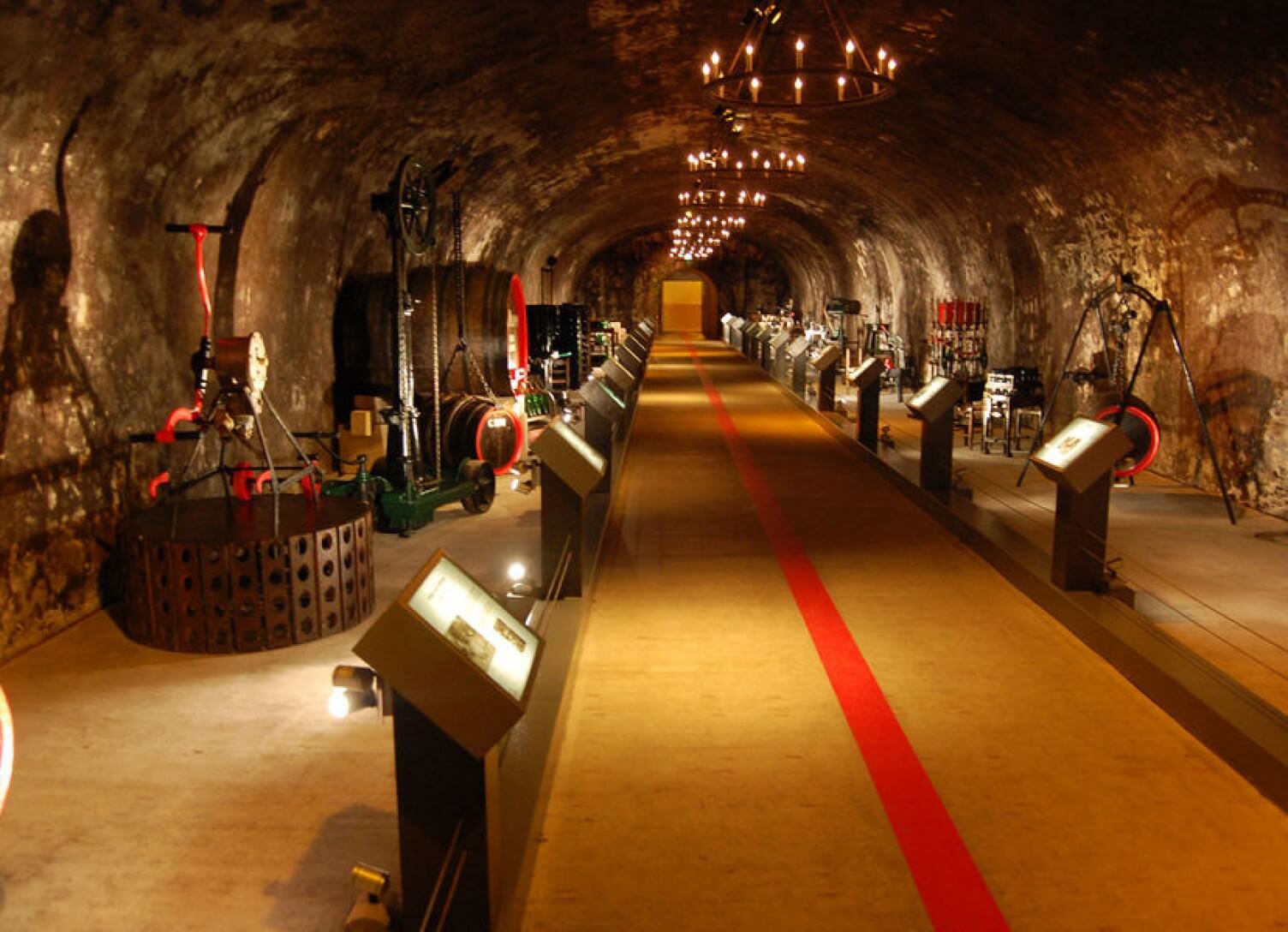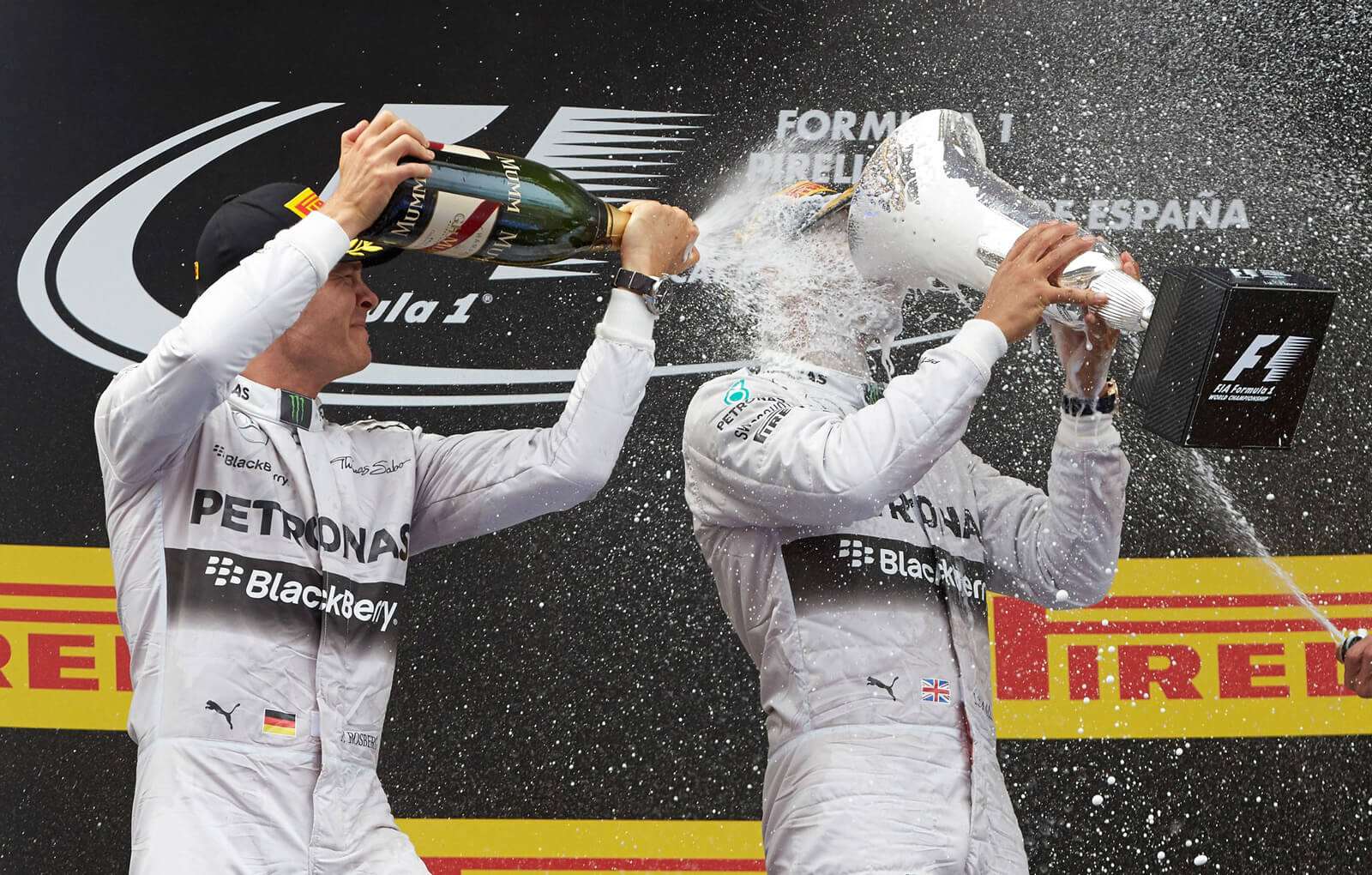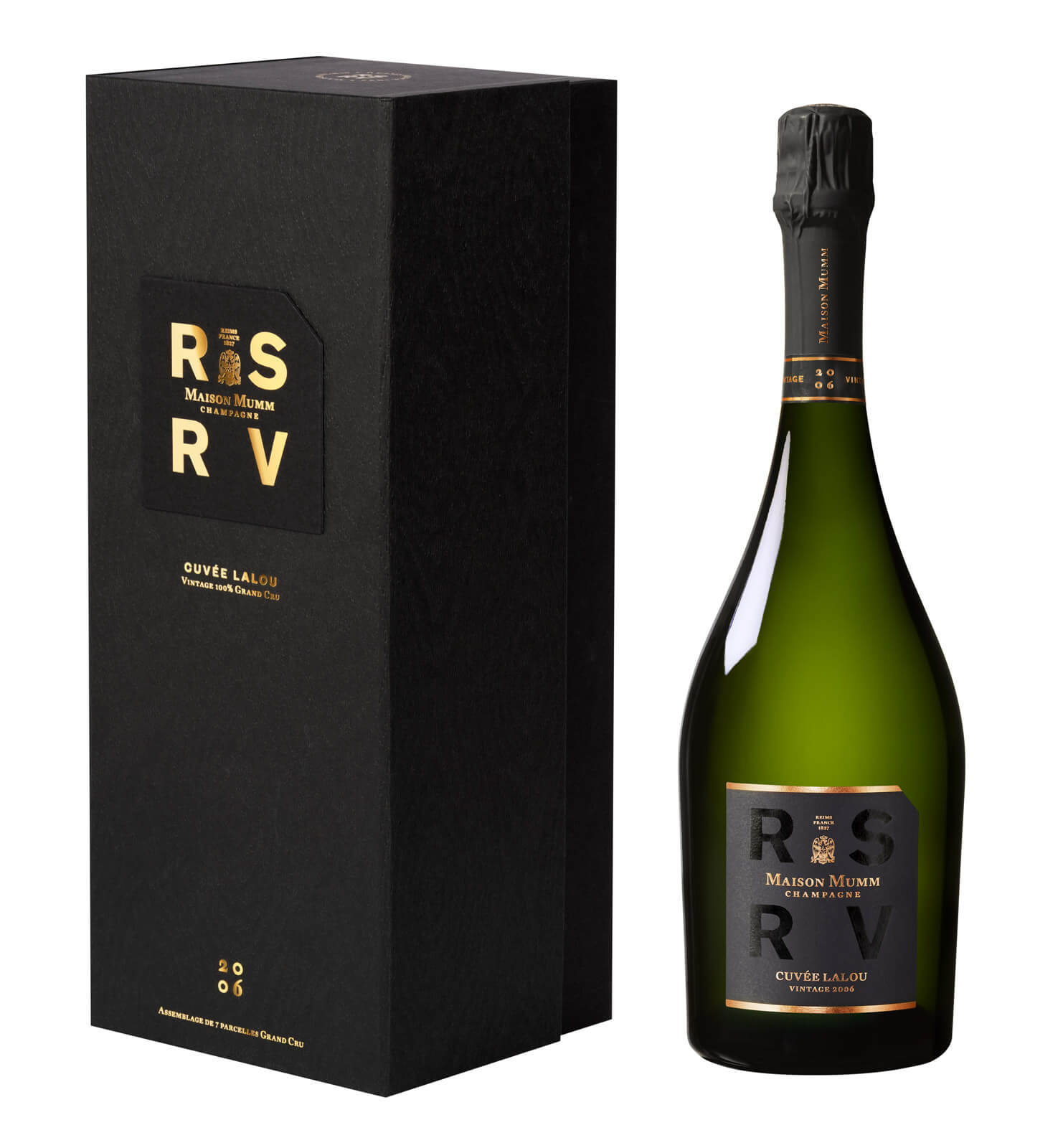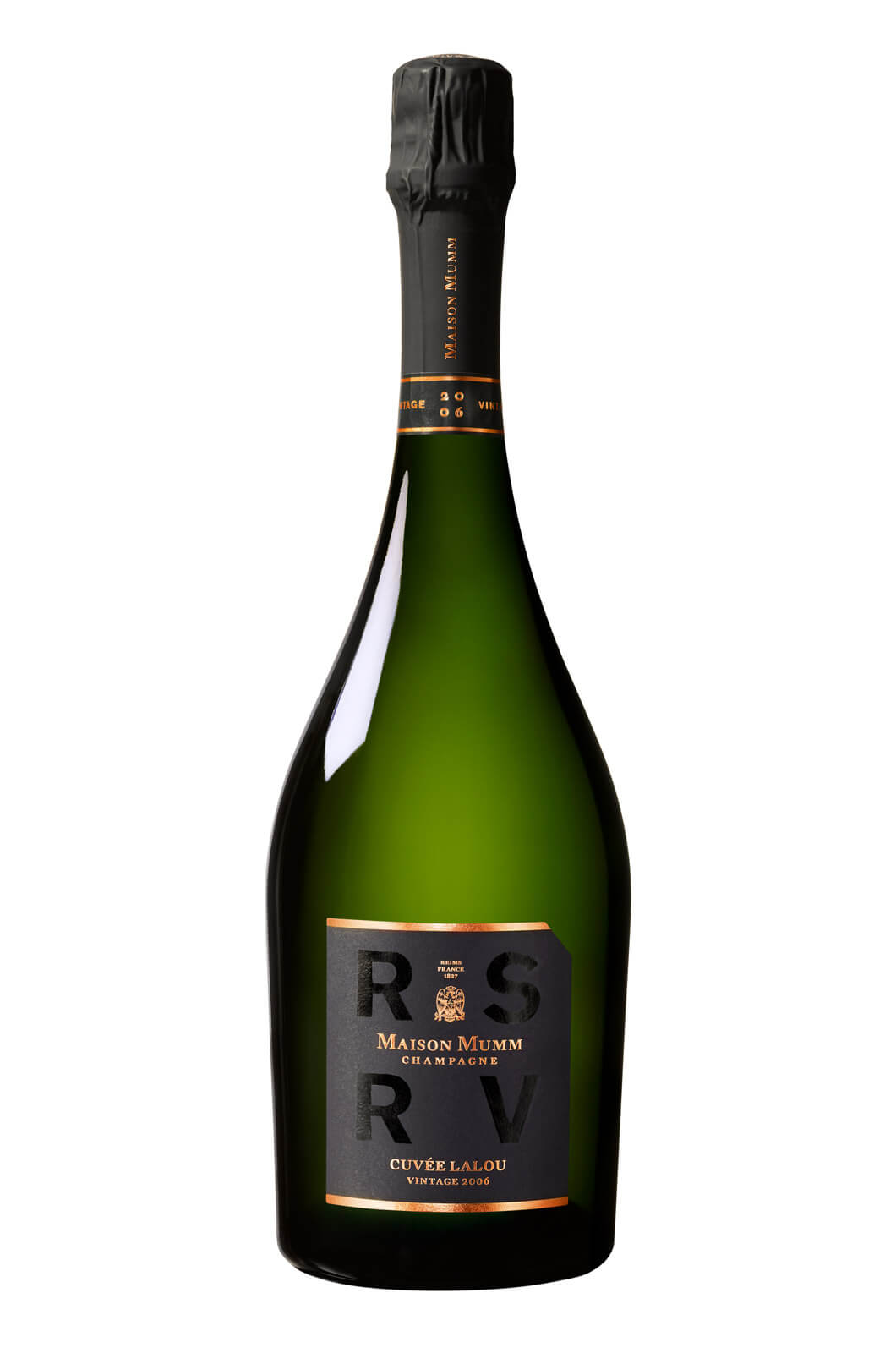by Ken Gargett
Interesting house, Mumm. A large champagne producer for certain, but one that sometimes seems as though it has not quite worked out what it wants to be.
A wonderful history, but then for a period it seemed to descend into little more than a discount producer with a few good wines for variety. More recently, there appeared to be a serious intent to return to the glory days when this house was seen as one of the greats.
More recently still, the jury remains in deliberations.
Mumm, or G. H. Mumm & Cie to give it the full moniker, is now part of the Pernod Ricard empire, joining in 2005 and sitting comfortably with another superb producer, Perrier-Jouët. It was recently ranked fourth in terms of volume, but it heads the sales of champagne in France. Mumm champagnes are also very popular in the USA.

Mumm’s champagne cellar
The house was established in 1827 by three brothers: Jacobus, Gottlieb, and Philipp Mumm. The family was successfully producing wine in Germany in the Rhine Valley but was keen to “experiment” with “exuberant” French wines.
When Georges Hermann Mumm took over in 1852, he renamed the company G. H. Mumm & Cie. Georges was known as a progressive and benign employer and a tireless promotor of his champagnes. Even back then he would travel the world, making it as far as Australia and New Zealand. It was he who created the famous Cordon Rouge, first released in 1875.
The German heritage and name proved somewhat of an issue during World War I. It was then that the French government confiscated the house and everything pertaining to it, notwithstanding that the family had lived in France for almost a century by that stage – though it had never taken French citizenship, which came back to bite it.
A Frenchman, René Lalou, who was part of the group that took over the house, took the reins during the wars, restoring the house to its former glory. Aside from an enforced blip during World War II, Lalou ruled over the house from 1920 to 1973, when he passed away.
He has been celebrated by Mumm naming its prestige cuvee after him, the first vintages while he was still with us. The “blip” was a short period during World War II when a German “representative” was placed in charge.
The 1950s are considered the period when the champagnes of Mumm were truly exceptional. In 1969, it was taken over by Canada’s Seagram who sold it in 1999 to Hicks, Muse, Tate & Furst. A year later, Mumm was sold to Allied Domecq, who in turn, sold to Pernod.
Mumm’s never been the word
The house has more than 800 acres so there is no question that it has the resources to make some of the region’s greatest wines (some sources have slightly lower estimates of acreage – no matter, it is there or thereabouts).
However, Mumm does source more than 75 percent of requirements from growers. It is also famous for the Moulin de Verzenay, a large windmill built in 1818 and now in its possession. If you ever get the chance to visit it and go to the top (it is no longer working), you will enjoy one of the region’s great views.
Some may think that the appointment of Usain Bolt as CEO – CEO standing for “Chief Entertainment Officer” – was even more important.

Mumm champagne supplied the Formula 1 showers for 15 years
For 15 years, Mumm was the champagne tipped over the heads of successful Formula 1 drivers. I always wondered why any house would want that fate for its champagne – surely, you drink the good stuff and have fun with what might be termed “lesser efforts.” However, it seems to have been a very successful form of sponsorship.
Mumm has moved into horse racing, sponsoring the Kentucky Derby, the Sun Met (apparently South Africa’s main horse race), and Melbourne Cup. As someone who has no interest in either car racing or horse racing (neither being real sports: all letters of indignation to the editor, please), I have no idea if they tip bottles over the heads of the winning horses.
Mumm champagne was very popular with several royal families across Europe and was named an official supplier to the British royal family in 1904. It still holds that position.
By the 1980s and 1990s, the feeling was that perhaps volume was more important than quality, hence the discounting (airline brands, a friend calls them), though there were some excellent champagnes among the range. The prestige René Lalou for certain, though it seems to me that it has always struggled to find its place.
The champagnes of Mumm
Mumm’s Cremant de Cramant (subsequently called Mumm de Cramant thanks to the bureaucrats), first created back in 1882 and then only for the directors of the company, has always been one of my favorite Blanc de Blancs.
From the village of Cramant, it was bottled at a slightly lower pressure than is usual: 4.5 atmospheres as opposed to 6 atmospheres. There was a time when this wine was a blend of three fine years. Then there was a suggestion that for a period it was a single-vintage wine but not labeled as such as it didn’t always meet the three-year requirement for time on lees. I believe it is now part of the RSRV program and released as a vintage.
Finally, the Vintage was a champagne that could really surprise if given time in the cellar. If I may slightly digress from today’s main topic, I strongly recommend immediate contact with your preferred wine retailer to grab a case or two of the Mumm 2012. Mumm has moved on to 2013, which I have not tasted as yet, but there should still be 2012 available.
It is a cracking champagne, even in the context of the ’12s (a superb vintage and one that really seems to suit Mumm). It is also available, if you look around, at incredibly good value.
For me, Mumm’s intention to remove itself from the bundle of champagne producers seen as more interested in volume came with the appointment of Dominique Demarville in 1998 (he later took on other elevated roles within the Pernod Ricard empire as well).
He was just 36 at the time, and so seen as extraordinarily young for the position. His talent soon showed that he was more than up to the task. He was supported by the appointment of Didier Mariotti as his deputy. They worked together for three years before Demarville moved to Veuve Clicquot in 2006, becoming chef de cave there.
Wisely, Mumm promoted Mariotti to the role of chef de cave. Between their efforts, the quality of Mumm champagnes improved out of sight. Even the large-volume non-vintage releases never looked better. Mariotti made numerous visits Down Under to show his champagnes and he was a very popular figure (I remember him sneaking away from his appointed keeper one day so we could enjoy a Partagás D4 cigar – Mariotti is a keen cigar smoker). His wines were much admired.
Recently, these two have been central figures in a very bizarre and dizzying game of musical chefs de cave. In mid-2019, Demarville announced that he was leaving Veuve Clicquot and would join Laurent-Perrier in January of 2020 to work with its chef de cave, Michel Fauconnet, subsequently taking over from him.
Fauconnet had been with Laurent-Perrier since 1973 and chef de cave since 2004. It came as a great surprise to the champagne world as usually the chief winemaker at Veuve Clicquot would only leave if carried out feet first or going to a much-deserved retirement. Moving to a competitor raised all sorts of eyebrows.
The next shock was that Didier Mariotti was moved on at Mumm. I say “moved on” although the exact details of what went on are not clear and will probably never be fully public (I have not spoken to Mariotti about this so these are purely my speculations).
What does seem clear is that Mariotti was happy at Mumm and had no intention of leaving voluntarily. The decision to “release” him surely cannot be based on the quality of the Mumm champagnes. That makes no sense.
Perhaps he spilled the soup on a member of the board of directors? Despite whatever public statements come forth, we’ll never know. There is, however, much speculation that the wines had gotten too good. I know that sounds insane, but by this I mean that Mariotti had raised their standards, not least by sourcing quality, and therefore more expensive, material.
The directors had decided to revert to the days where volume again ruled. You’ll never get a winemaker to make lesser wines than he can, so Didier had to go if they were to get those prices down. As I say, that is purely speculation, and it hardly matters.
Guess where Mariotti ended up? Yes, he again took over from Demarville and is now a very happy chef de cave at Veuve Clicquot. I suspect that they might have to carry out him eventually. It is a great decision by Veuve Clicquot and no doubt we’ll see the superb wines maintain their high standards.
By now, Demarville had taken over from Fauconnet at Laurent-Perrier, but it was short lived (even though it has been suggested that he was also given the reins at Salon, surely one of the greatest winemaking positions in the world).
He decided it was not for him, preferring the work as a hands-on winemaker over dealing with all the PR and management that came with his former roles. He has now moved to Champagne Lallier. Michel Fauconnet has returned to Laurent-Perrier from retirement, although I doubt he ever really left.
And Mumm? Laurent Fresnet, chef de cave at Henriot since 2006, will take that role at Mumm. If the rumors that this was all so Mumm could push a more volume-oriented agenda are true, this would seem a strange appointment.
Surely, Fresnet is someone associated with the highest quality and smaller production levels. So perhaps we have this all wrong. It is going to be interesting to see. I know many Mumm aficionados who are very keen to see that Mumm does maintain its recent high standards. I am one.
Mumm RSRV R. Lalou 2006
The latest release of Mumm’s prestige champagne is the 2006 vintage of the RSRV R. Lalou. “René Lalou” (distinct from “R. Lalou”) was introduced as the prestige champagne back in the late 1960s, though exact details are surprisingly difficult to find. Claims of only five vintages ever, or nine vintages ever, and so on abound.

Mumm RSRV R. Lalou 2006 champagne
Consensus suggests that 1964 was the first vintage, however, and Christie’s provides extensive details on a bottle of 1961 it offered. Others look to 1966 and/or 1969 as the initial vintage.
In any event, the first incarnation was to conclude with the excellent 1985, a legendary champagne. We then saw offerings called “R. Lalou” from 1998 and 1999. Mariotti was always one of the minority in Champagne in preferring the ’99s over the ’98s. Personally, I am a 1998 fan.
While I have no recollection of a 1996 and thought that it was never made, there are tasting notes for a ’96 Lalou online. Then follow 2002 and 2004 (the internet suggests that the 2004 was released but I have never seen it and I am not convinced it was), before we get to 2006.
If all this was not confusing enough for you (it certainly is for me), the “R. Lalou” is now not to be seen as a separate prestige cuvee, but part of the RSRV program, which contains a number of wines.
For me, that is a mistake. This wine deserves to be the focus of attention, not to be just one of a range. As for what RSRV stands for, the only information I can find says that it is part of “ReSeRVed,” but I honestly have no idea if that is true or someone is amusing themselves. I am assured it is true, though it seems odd.

Mumm RSRV R. Lalou 2006 champagne
The house sources grapes from a maximum of 12 specific plots (lieu-dits) across the Montagne de Reims for Pinot Noir and the Côte des Blancs for Chardonnay for the Lalou wine. I say a maximum of 12 as some years it is less. In 1998, it was seven plots. Again in 2006 just seven plots: Les Bionnes, Les Crupots, Les Briquettes, Les Perthes, Hannepés, Les Rochers, and Les Houles. This was also the same for the 2002.
They are vinified separately and then the wine spends at least ten years on lees – eleven for the 2006. The dosage is six grams/liter and the wine goes through 100 percent malolactic fermentation. It is a blend of 50 percent Pinot Noir and 50 percent Chardonnay. Anticipate the price to be around the AUD$400 mark.
The wine itself is a revelation. Rich and complex with honeycomb notes and some butterscotch. Great length. Finely balanced. As we proceed, there are notes of honey and white truffle. Hints of brioche and glacé fruit, vanilla, and pears. Pastry and peaches with the merest hint of raspberries.
There is an intriguing smoky note that makes a brief appearance right on the finish. 97.
Mumm feels a little like it is at the crossroads, but there are so many reasons to believe that great days are ahead. The wines are superb and it would seem that any issues can be resolved.
For more information, please visit mumm.com/en-ww/product/lalou-2006.
You may also enjoy:
Perrier-Jouët Belle Epoque Blanc de Blancs: One Of The Finest Champagnes I Have Ever Enjoyed
Louis Roederer Cristal 2013 And Cristal Rosé 2012: As Good As Champagne Gets
Dom Pérignon 2008: From The Monk’s Earliest Beginnings To The Most Glorious Champagne Vintage
Leave a Reply
Want to join the discussion?Feel free to contribute!





















































To update, the very kind people at Mumm have sent some of the latest info (and some from many years back).
Cordon Rouge was released first in 1876
The first vintage of Lalou was 1966.
Part of the reason that the Cuvee was sidelined in the 1980s was that the owners, Seagrams, “tried launching 2 other prestige cuvees : Mumm de Mumm and Grand Cordon (a vintage at the time)”.
There have been 13 Vintages declared since the creation of the cuvee (no 1996 and 2004 releases).
Monsieur Lalou was president of Maison Mumm from 1940 till his death in 1973 (interrupted by WW2 when the Mumm family came back from Germany)
Mumm owned vineyards : 218 hectares, 160 hectares are Grand Cru (average 98% on the quality scale) 78% of our Vineyard is Pinot Noir.